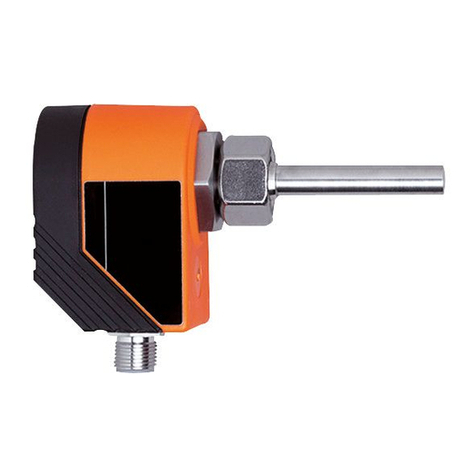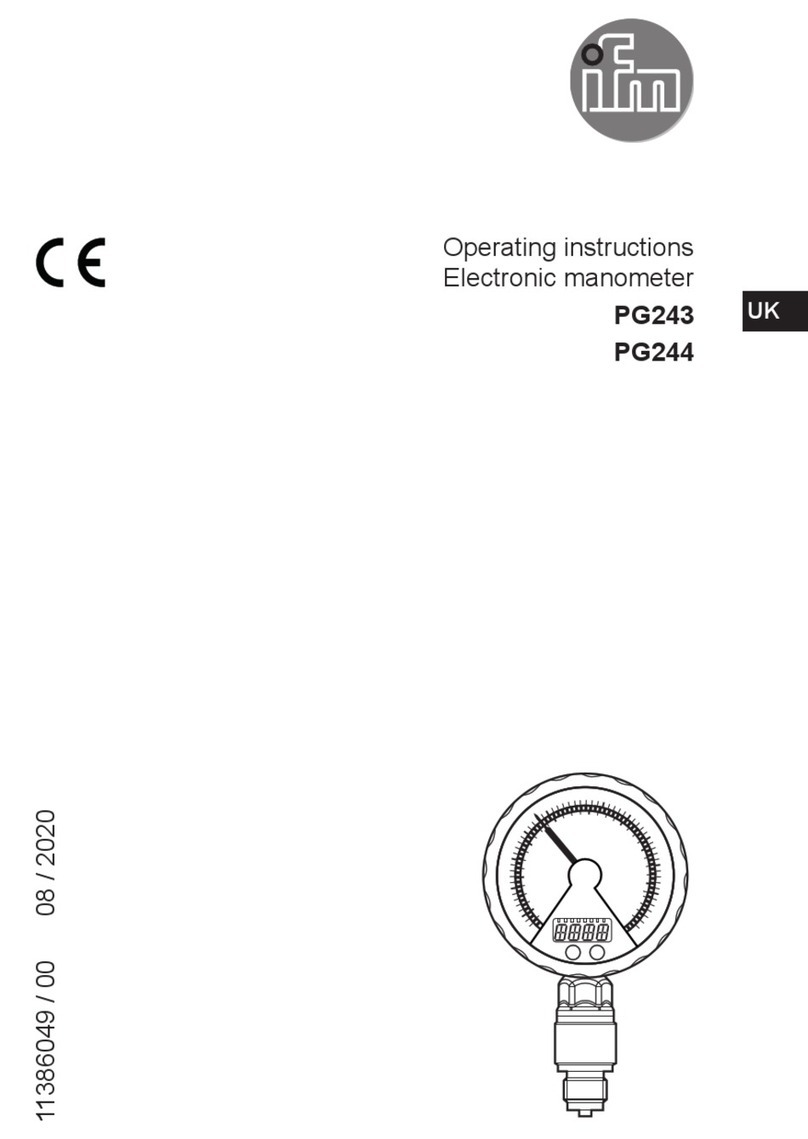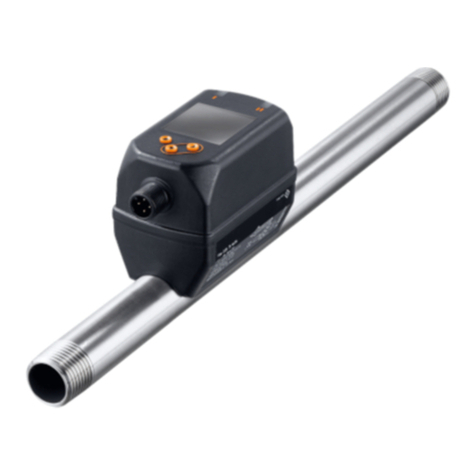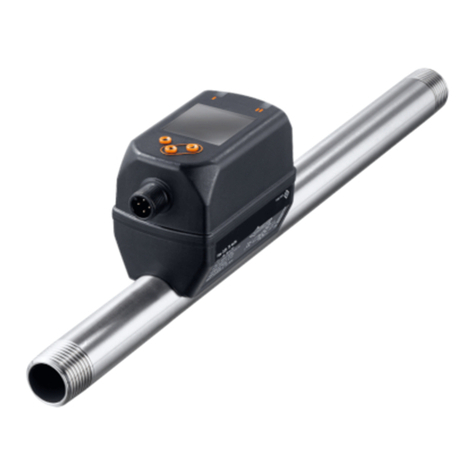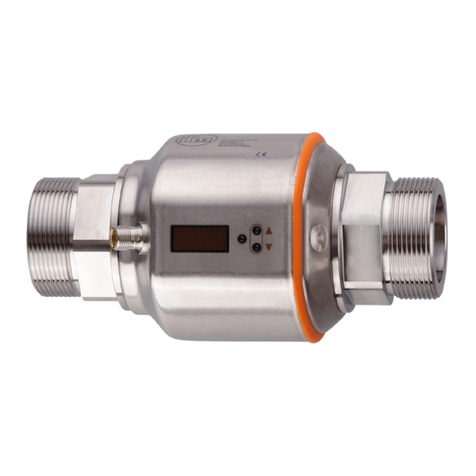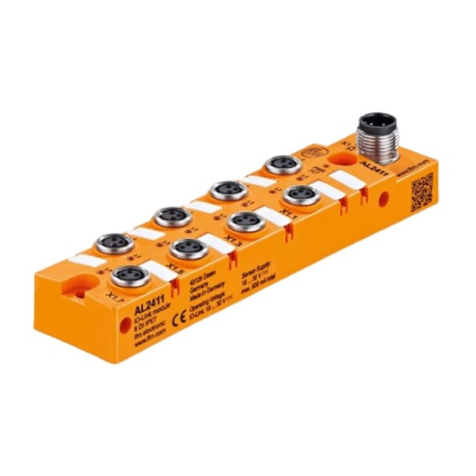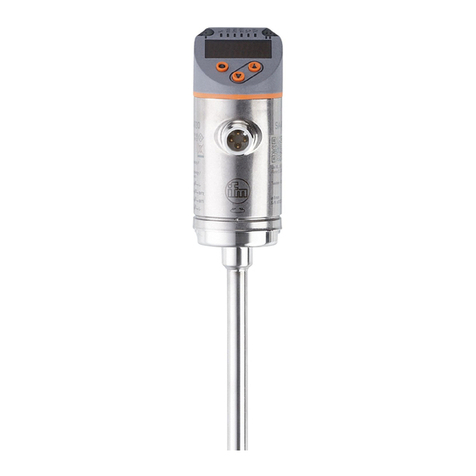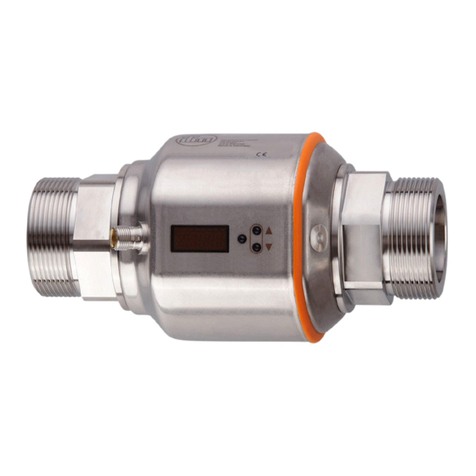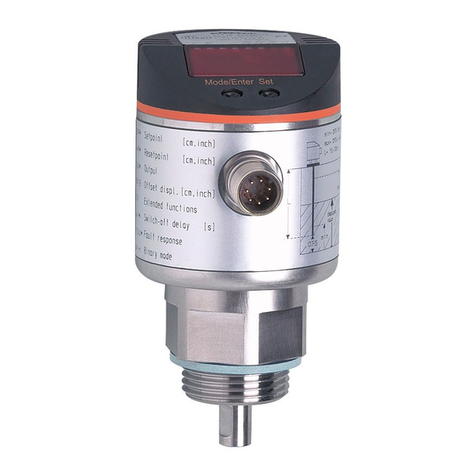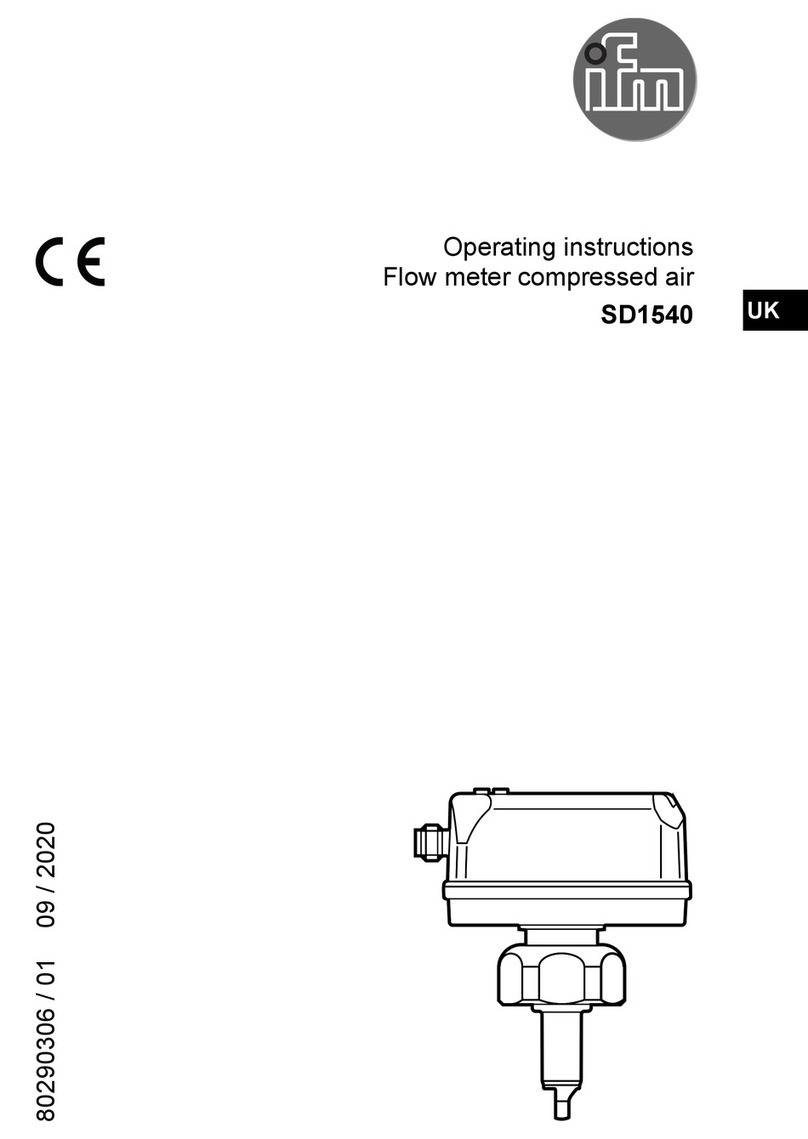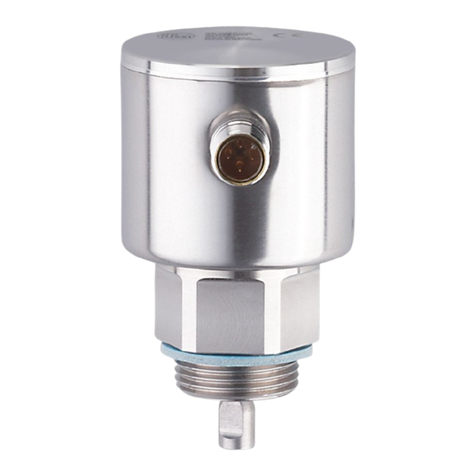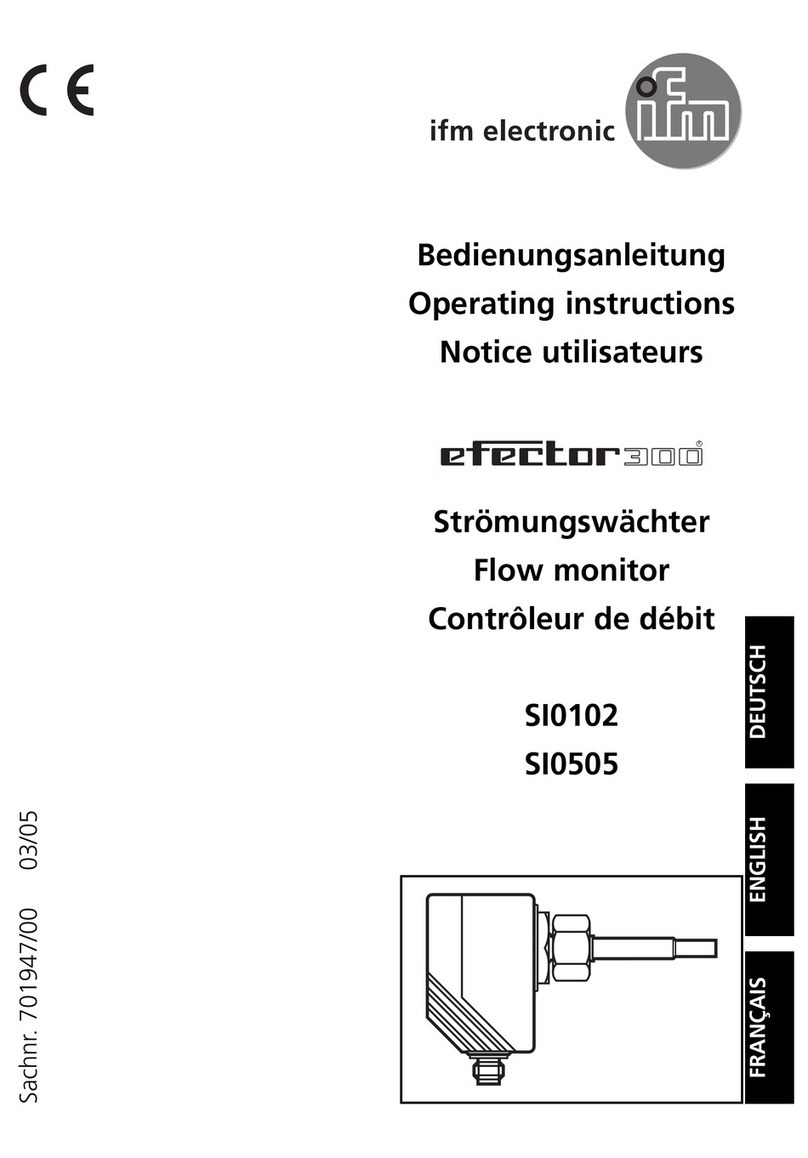
2
Contents
1 Preliminary note ��������������������������������������������������������������������������������������3
1�1 Symbols used ������������������������������������������������������������������������������������������������3
2 Safety instructions �����������������������������������������������������������������������������������������������3
3 Functions and features ����������������������������������������������������������������������������������������4
3�1 Application area ��������������������������������������������������������������������������������������������4
3�2 Operating principle flow monitoring ���������������������������������������������������������������4
3�3 Communication (IO-Link) �������������������������������������������������������������������������������4
4 Installation������������������������������������������������������������������������������������������������������������5
4�1 Installation location ����������������������������������������������������������������������������������������5
4�2 Sources of interference in the pipe system ���������������������������������������������������6
4�3 Mounting operation ����������������������������������������������������������������������������������������6
5 Electrical connection ��������������������������������������������������������������������������������������������7
6 Operating and display elements ��������������������������������������������������������������������������7
7 Set-up and settings for water �������������������������������������������������������������������������������8
7�1 Change the switch point (optional) ����������������������������������������������������������������8
7�2 High flow adjustment (optional) ���������������������������������������������������������������������9
8 Additional settings (optional) ��������������������������������������������������������������������������������9
8�1 Low flow adjustment ��������������������������������������������������������������������������������������9
8�2 Configure the switching output ����������������������������������������������������������������������9
8�3 Restore the factory setting (reset) ���������������������������������������������������������������10
8�4 Lock / unlock the unit �����������������������������������������������������������������������������������10
8�5 Remote adjustment �������������������������������������������������������������������������������������10
9 Error during adjustment �������������������������������������������������������������������������������������10
10 Operation ��������������������������������������������������������������������������������������������������������� 11
11 Maintenance ���������������������������������������������������������������������������������������������������� 11
12 Scale drawing ��������������������������������������������������������������������������������������������������12
13 Technical data ��������������������������������������������������������������������������������������������������12

